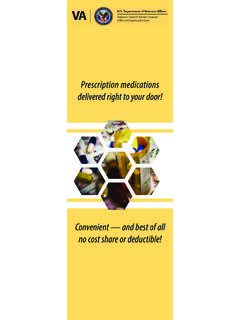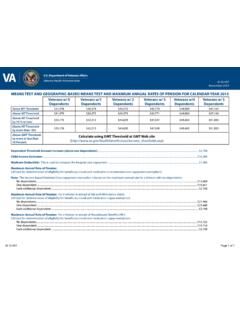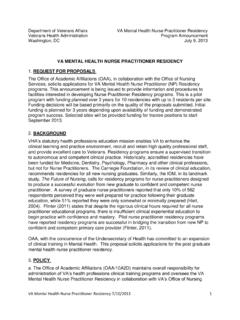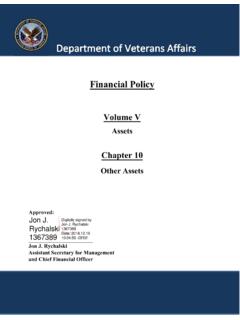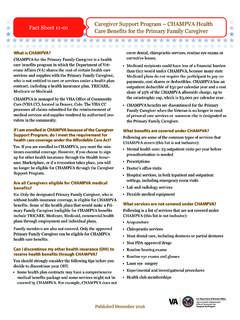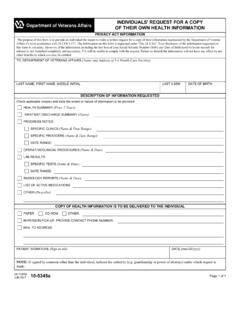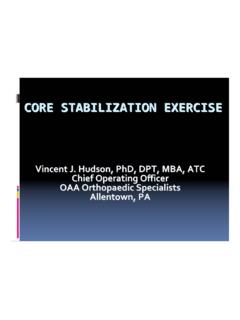Transcription of THE POWER OF BREATH: DIAPHRAGMATIC BREATHING
1 THE POWER OF BREATH: DIAPHRAGMATIC . BREATHING . DIAPHRAGMATIC BREATHING is sometimes referred to as belly, deep, relaxed, or abdominal BREATHING . It optimizes use of the main muscle of BREATHING , the diaphragm, resulting in slower, deeper BREATHING . It can be an important skill in a patient's self-management toolbox. With practice, most clinicians can teach it to their patients in 5-10 minutes. In contrast to shallow BREATHING , DIAPHRAGMATIC BREATHING is marked by expansion of the abdomen rather than the chest during the in breath. With shallow BREATHING , also known as thoracic or chest BREATHING , minimal breath is drawn into the lungs, usually through the use of the intercostal muscles and not the diaphragm.
2 When lung expansion occurs lower in the body, BREATHING is described as deep and corresponds with observed or felt movement of the abdomen outward with inhalation. For use of this technique in chronic pain self-management, refer to DIAPHRAGMATIC BREATHING to Assist with Self-Management of Pain.. WAYS DIAPHRAGMATIC BREATHING CAN BE USEFUL. DIAPHRAGMATIC BREATHING : Shifts a person from a place of passivity to a place of activity; they are doing something about their symptoms Introduces training in increasing calm and relaxation Provides a simple way to quiet high-arousal states caused by pain or other symptoms and the emotions that it elicits Is extremely portable Costs nothing except an initial investment of time Can be used to manage other life stressors Can be used during difficult procedures, such as injections, imaging studies, etc.
3 Provides a positive distraction Can be used to interrupt negative patterns of thought Demonstrates that clinicians consider non-pharmacologic interventions important for health PHYSIOLOGICAL EFFECTS. Shallow BREATHING often accompanies stress, anxiety, and other psychological difficulties. This is typically a result of sympathetic over-arousal, commonly referred to as the fight or flight response. With practice, DIAPHRAGMATIC BREATHING lead to a reversal of fight or flight, to a quieting response modulated by the parasympathetic nervous system. It has a number of physiologic effects: VA Office of Patient Centered Care and Cultural Transformation Page 1 of 10.
4 The POWER of Breath DIAPHRAGMATIC BREATHING causes increased venous return to the heart. With inhalation, the diaphragm generates negative intrathoracic pressure, and blood is pulled into the thorax through a vacuum effect. This leads to increased stroke volume, which triggers arterial stretch receptors and results in increased parasympathetic activity, and decreased sympathetic activity. These changes bring about decreased heart rate and total peripheral resistance.[1]. Inhalation at a rate of 6-10 breaths per minute causes increased tidal volume while maintaining optimal minute ventilation. The increase in tidal volume causes cardiopulmonary baroreceptor stretch which in turn leads to decreased sympathetic outflow and subsequently decreased peripheral vascular resistance.
5 [1,2]. DIAPHRAGMATIC BREATHING increases heart rate variability (HRV), which is a proxy measure of the balance of sympathetic and parasympathetic influence on the heart. Reduced HRV portends a poor prognosis in a variety of clinical contexts, including post-MI, ischemic heart disease, congestive heart failure, and diabetes with autonomic neuropathy.[1-3]. CLINICAL RESEARCH. HYPERTENSION. The antihypertensive mechanisms of slow, deep BREATHING have not been fully elucidated. Effects on chemoreceptors, baroreceptors, central cardiovascular and respiratory control centers, and the autonomic nervous system are thought to contribute. Essential hypertension is thought to involve chemoreceptor hypersensitivity causing an excess of sympathetic nervous system activity.
6 The chemoreceptor reflex is mediated by specialized neurons in the central and peripheral vasculature which respond to changes in the concentration of carbon dioxide. Increased carbon dioxide causes an increase in minute ventilation and sympathetic outflow, while decreased carbon dioxide causes a decrease in minute ventilation.[4] As noted above, slow, deep BREATHING stimulates baroreceptor activity through increased stroke volume promoting vasodilation.[1,2] Slow deep BREATHING is thought to promote baroreceptor inhibition of chemoreceptors, leading to decreased sympathetic tone, increased vasodilation, and decreased blood pressure. Additionally, it is hypothesized that slow deep BREATHING exerts an autonomic balancing effect at centers of cross-talk between cardiovascular and respiratory control centers in the central nervous system.
7 [5] Device-assisted slow BREATHING has the most robust evidence for the management of hypertension. The RESPeRATE device has been studied the most extensively. It consists of a belt worn around the thoracic rib cage that monitors respiratory rate. This information is relayed to a small electronic device which emits musical tones used to pace the patient's BREATHING . In 2013, the American Heart Association issued a scientific statement about the use of complementary and alternative therapies for hypertension management, wherein the committee states, Device-guided BREATHING is reasonable to perform in clinical practice to reduce blood pressure. [5] Based VA Office of Patient Centered Care and Cultural Transformation Page 2 of 10.
8 The POWER of Breath on study protocols, the American Heart Association recommends fifteen-minute sessions at least three to four times per week.[5] Further research is needed to ascertain whether slow deep BREATHING without the use of an assistive device will yield similar antihypertensive effects. CONGESTIVE HEART FAILURE (CHF). Inspiratory muscle strength is an independent predictor of survival in heart failure. Decreased inspiratory muscle strength and endurance leads to a variety of derangements including inefficient ventilation and preferential blood shunting to respiratory muscles . and away from exercising limbs. This leads to decreased exercise tolerance in patients with CHF.
9 Inspiratory muscle training leads to increased inspiratory muscle strength and endurance, which brings about more efficient ventilation and increased exercise tolerance.[6]. CHRONIC OBSTRUCTIVE PULMONARY DISEASE (COPD). In patients with COPD, hyperinflation places the diaphragm in a state of chronic partial stretch. This mechanical disadvantage leads to increased work of BREATHING and relative respiratory muscle weakness. Inspiratory muscle training has been shown to increase inspiratory muscle strength and endurance, decrease dyspnea and improve exercise capacity and health care related quality of life.[7]. ASTHMA. A 2009 systematic review found that training in DIAPHRAGMATIC BREATHING lead to short term and long term improvement in health care related increased quality of life.
10 One of the included studies also demonstrated physiologic improvements including higher end-tidal carbon dioxide, decreased resting respiratory rate, and increased FEV1% following the DIAPHRAGMATIC BREATHING intervention, but these results were not consistent across studies.[8]. HOT FLASHES. In 2012, Sood and colleagues published a randomized controlled trial investigating the effectiveness of slow-paced BREATHING for the management of hot flashes. The intervention group used audio recordings either once or twice per day to pace the BREATHING at a slow rate of six breaths per minute, while the control group used audio recordings once per day to pace BREATHING at a normal rate of 14 breaths per minute.
